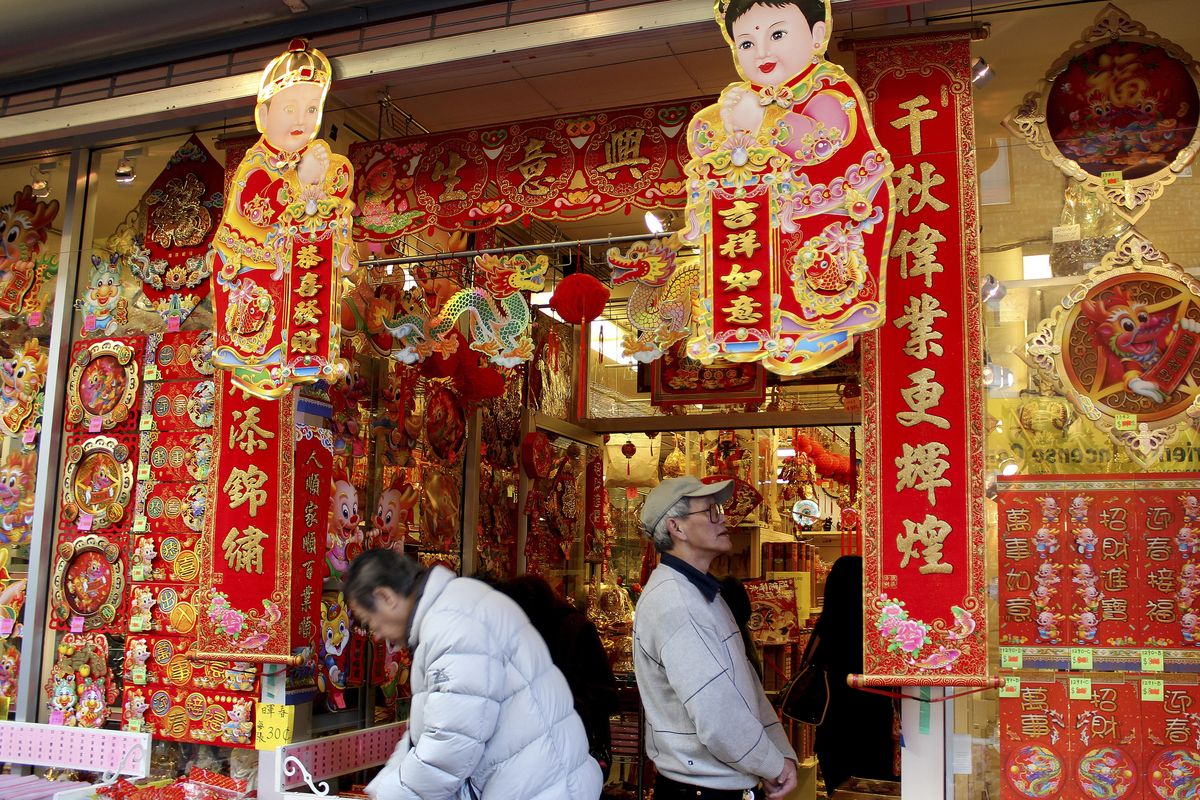Tips for celebrating Chinese New Year
Year of the Dragon calls for reds, golds

An apple a day keeps the doctor away, but did you know a bowl of tangerines can usher in good fortune for the Lunar New Year?
In Chinese, their name sounds like the word for luck. The same double meaning holds true for oranges, which sound like the word for fortune, and pomelos, which sound like “to have.”
This kind of symbolism is huge in decorating for Chinese New Year, where setting the stage for an auspicious year means surrounding yourself with things that look and sound like good fortune – a home-sweet-homonym approach.
Red and gold are the dominant colors of Chinese New Year decorations, with gold signaling prosperity and red indicating life. (And the word for red in Chinese sounds like prosperous.)
As the Year of the Dragon approaches on Monday, one way to mark the occasion is to hang paper banners printed with couplets expressing good wishes for the coming year. These can be found at Chinese markets and online. And if you have a steady hand, you can try the DIY approach, looking online for a template of the character “fu” – fortune – and copying it.
San Francisco resident Deborah Parker Wong, an American of English and German descent married to a Cantonese Chinese man, has been observing Christian and Chinese festivals for years to give the couple’s two children the best of both cultures.
“My favorite decorations are the bright-red flowering quince branches that I cut from our garden at this time of year. The branches symbolize growth and prosperity, and they are hung with red envelopes that contain ‘lucky money,’ ” she said. (Lucky money is cash stuffed into brightly decorated red envelopes that are given to children in the family.)
Parker Wong, an editor at the Tasting Panel magazine, also puts out plates of tangerines with the stems and leaves still attached, which represents strong family bonds.
Another fun custom is to prepare a Harmony Tray or “tray of togetherness,” featuring candied fruits, nuts and seeds, with each representing some form of good fortune. Candied melon, for instance, symbolizes growth and good health. Items are often displayed in groups of eight, a homonym for prosperity, or nine, which sounds like longevity.
Known as the Spring Festival and celebrated in similar ways in other Asian countries, Chinese New Year begins with the big “reunion dinner,” where as many members of the family as possible get together under one roof. The celebrations go on for two weeks, ending on the 15th day with the Lantern Festival.
A simple and fresh way to welcome the Lunar New Year is with flowers. Peonies, the “queen of flowers,” are a popular choice, although any kind of flower is OK because the idea is that flowers represent a beginning, says David Lei, an expert in Chinese traditions who serves as a cultural adviser to the Chinese Lunar New Year Festival Committee, part of the Chinese Chamber of Commerce in San Francisco.
Water narcissus flowers symbolize good luck, and it’s particularly auspicious if they bloom on New Year’s Day.
An easy way to create your own Lunar New Year display, says Parker Wong, is to set out a vase of narcissus or flowering plum branches, and then add a dish of tangerines and pomelos, stems and leaves attached of course, and a harmony tray.
Before you get started with New Year’s decorating, remember to clean the house thoroughly; this is an important ritual to clear the house of any residual bad luck.
The good news is you won’t have to do this again until the festival is over. After all, you wouldn’t want to sweep any of that new luck out the door.